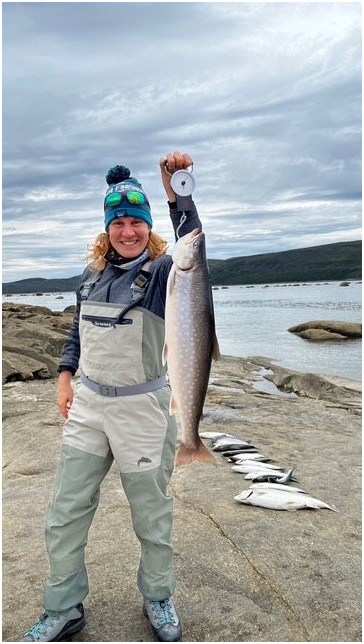Leaf River Nunavik
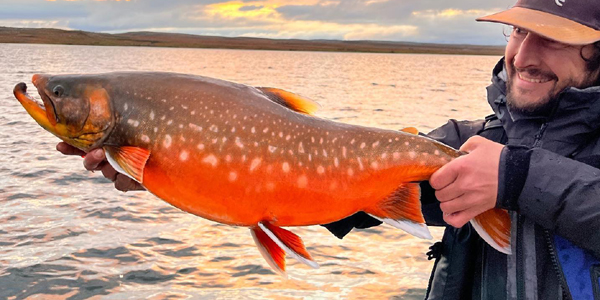
Leaf River Nunavik
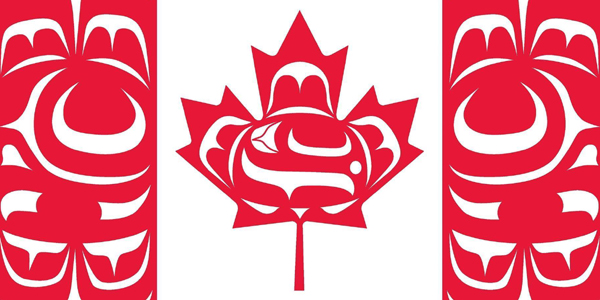
Leaf River Nunavik
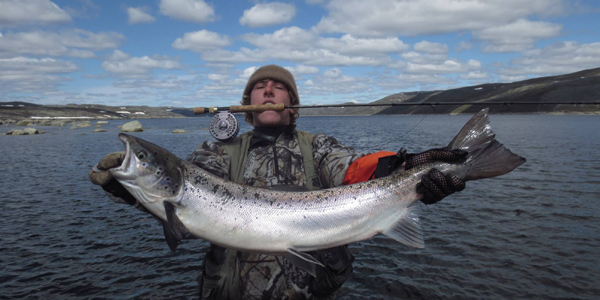
Leaf River Nunavik
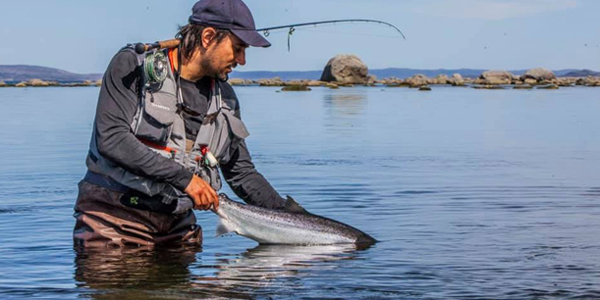
Leaf River Nunavik
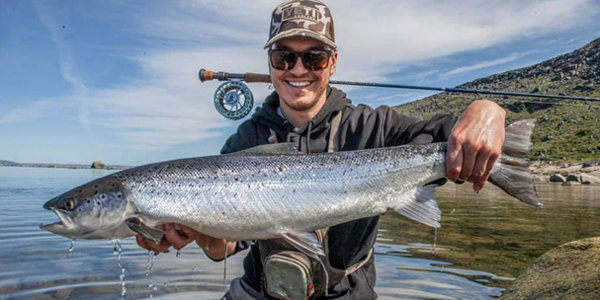
Leaf River Nunavik
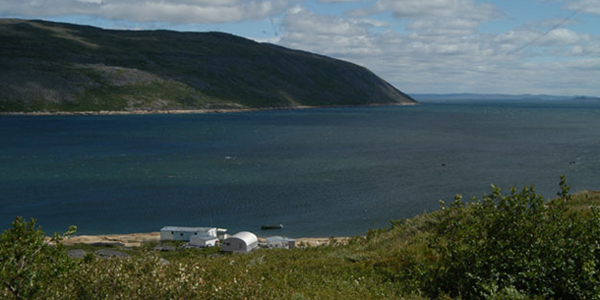
Leaf River Nunavik
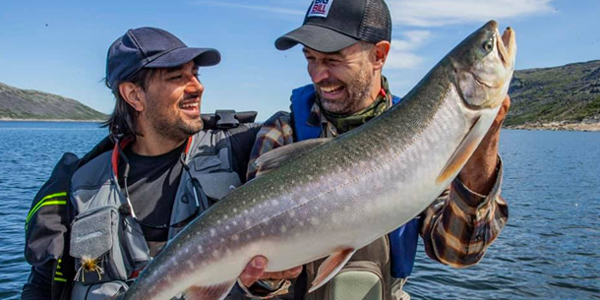
Leaf River Nunavik
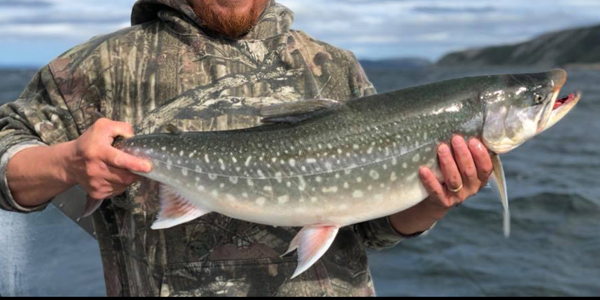

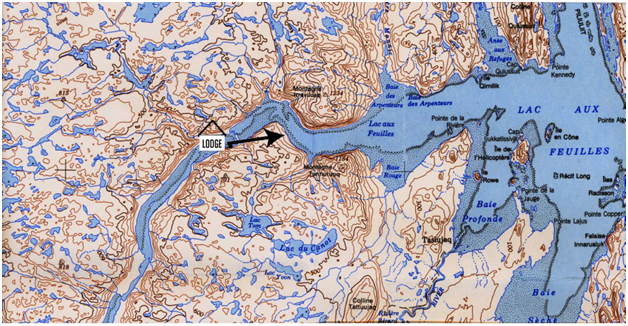
"The advantage of fishing the estuary compared to the fresh-water section of the Leaf River is that the Arctic char, the Atlantic salmon and the sea-run speckled trout feed vigorously there on the abundant shrimp and small baitfish."
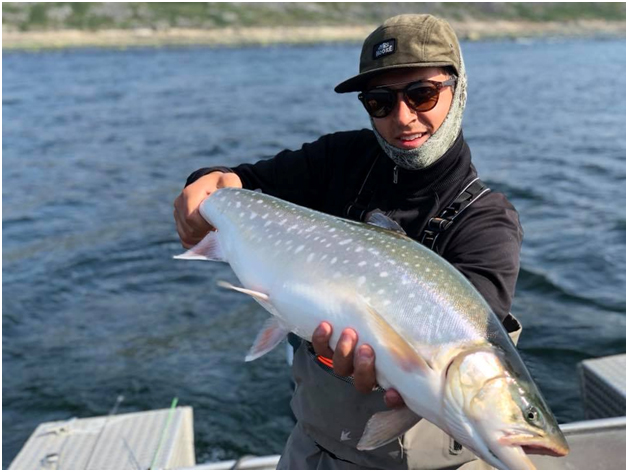
The char and salmon are strong swimmers and can readily avoid predation by the seals and beluga whales that enter the estuary. For this reason, char and salmon are generally caught in deeper water via fishing from a drifting boat. Flocks of gulls that hover above the feeding char give a clear indication of productive locations. Char will also come into shallow water at high tide in pursuit of prey, in which case shore fishing is highly productive.
The large sea-run trout in the estuary tend to hide close to rocks and are best caught at low tide. A fly that is particularly effective is the woolly bugger, which provides a good imitation of shrimp and readily fools the trout and char. Trout can also be caught on surface flies at low tide among the rocks at the edge of the estuary channel.
TRIP SUMMARY:
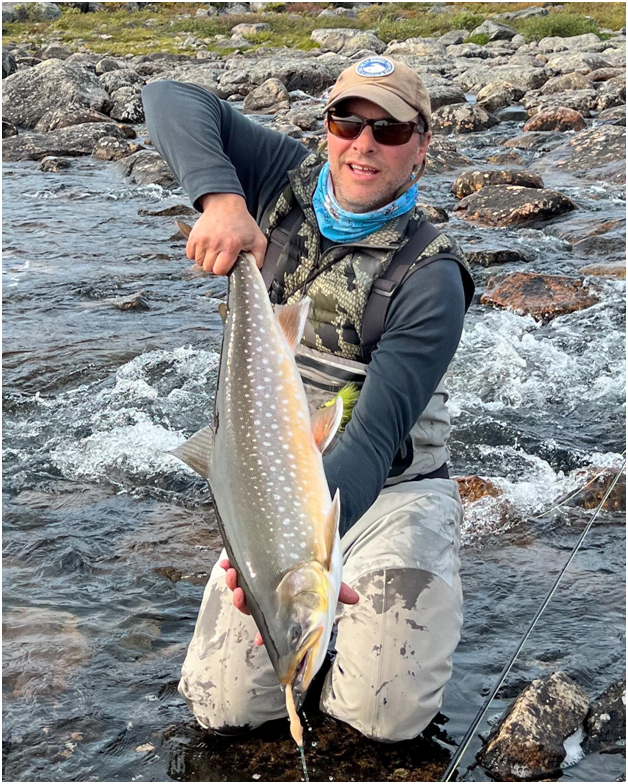
The Arctic Char of Leaf Bay: The range of the Arctic char extends north to Baffin Island and beyond. The Arctic Char of Leaf Bay are large and healthy, making them an ideal objective for sport fishing by fly rod.
Like salmon, the Arctic char feed primarily in salt water. During the short summer season, from mid-June to mid-August, the long days of sunlight make the salt water turn green with plankton, giving rise to a rich food chain. The Arctic char reach this bounty by swimming downstream from the fresh water lakes where they have spent the winter. During the summer feeding frenzy the char grow rapidly and store sufficient reserves to last through the remaining 10 months of the year.
After the summer feeding, the char swim back upstream, where they spawn, and then remain relatively dormant until they return to the salt water in June. During the summer feeding, char will readily strike streamer flies, imitation shrimp (e.g., "woolly buggers"). Because they are fundamentally a salt-water fish, sufficiently strong and fast to avoid the seal and beluga predators, the char, like the salmon, put up an impressive fight when hooked. Its a matter of debate which is the stronger fighter, the Arctic char or the Atlantic salmon.
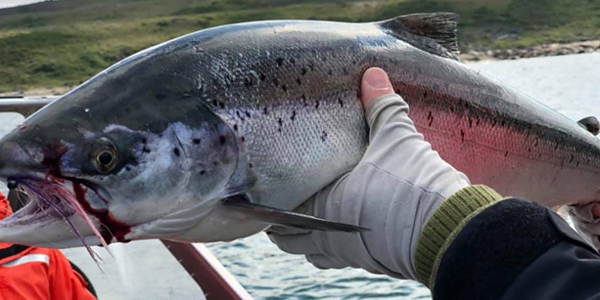
The tidal swing in Leaf Bay is the highest in the world so fly-fishing tactics for high, middle and low tide in the estuary vary greatly. At high tide I've had the best luck fly fishing from the drift boat (freighter canoe) of a streamer fly with a weight forward sinking shooting head and short fluorocarbon leader. There is almost always a wind blowing, which also has the benefit of keeping the mosquitoes away. The guide will motor upwind and then cut the engine and drift. Sometimes the char can be seen close to the surface, but experience says they are mostly down deep. Flocks of gulls circulating above and occasionally diving give away the presence of feeding char down deep.
These bright silver char will hit hard, and since they are generally big (5 to 20 pounds with more than half above 10 pounds) they make long runs and show enormous endurance. When they get close and see the boat they invariably make 1 or 2 more long runs. .
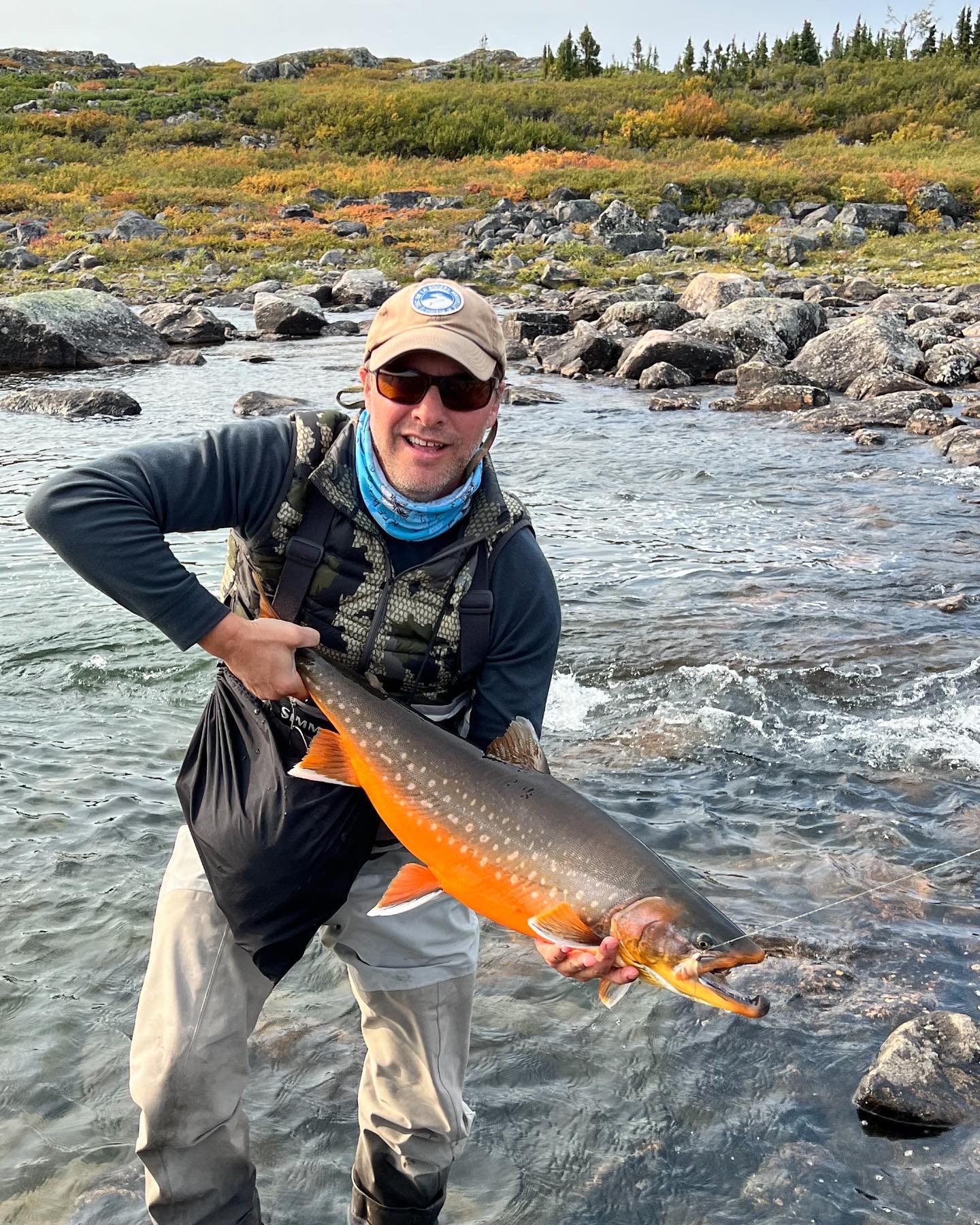
Fly fishermen will typically use large chartreuse, hot orange or pink streamer flies with weighted heads to simulate the bait fish, tube style flies work extremely well. White flies also work equally well. In fact, I think just about anything will work when the char are feeding. They tend to feed voraciously and fill their bellies until they are grossly distended. Once they're full they stop feeding to digest their burden. Once the food is digested they feed again.
This has been my observation. If you happen to hit this feeding sequence right there can be no better fishing in the world. The salmon are caught the same way as the char at high tide.
The sea trout are almost never caught from the boat at high tide. They are hiding among the rocks at the bottom. However, from the shore one can have good fishing for trout in water 10 to 20 feet deep. The trout and char caught from shore are generally seeking shrimp. So, I use a floating line and a 9- or 12-foot leader. My preferred fly for this is the woolly bugger in green or brown, but I must confess that I have not done all that much experimentation with high-tide shore fishing compared to the experiments I've done from the channel edge at low tide.
Fly fishermen should have perfected their double-hauling technique for longer casts under windy conditions. Youll find this particularly useful for casting from the shore, using either a #8 or #10 rod. Spey casting from shore is also very effective. I recommend 7,8 or 9 wt. Spey rods with Skagit Shooting Heads.
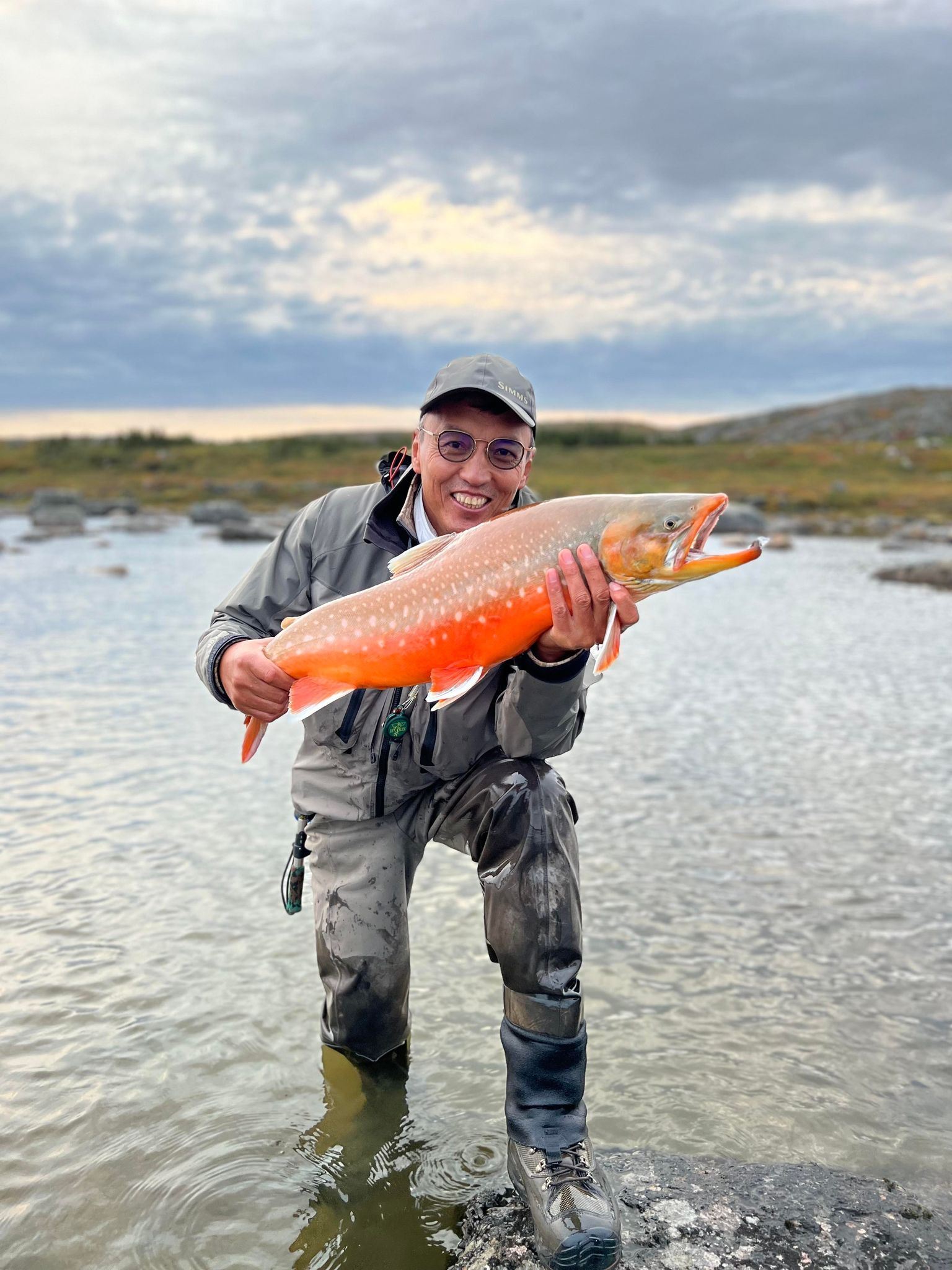
SEASON:
Our season starts mid-July and runs until mid-August.
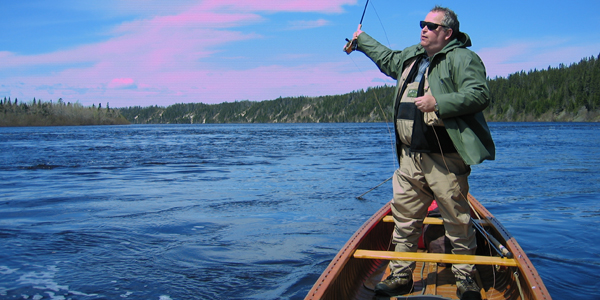 LODGING:
LODGING:Accommodations are somewhat rustic but comfortable. Toilets, running water and hot showers are provided. The bunk beds have mattresses but guests are responsible for their own sleeping bags, pillow cases, towels and toiletries.
GUIDES:
One experienced Inuit guide is provided for every 2 or 3 anglers. Fishing is done from outboard-powered freighter canoes. Usually fishing from a drifting boat is most effective for Arctic char and salmon, but shore fishing is also productive, especially at low tide.
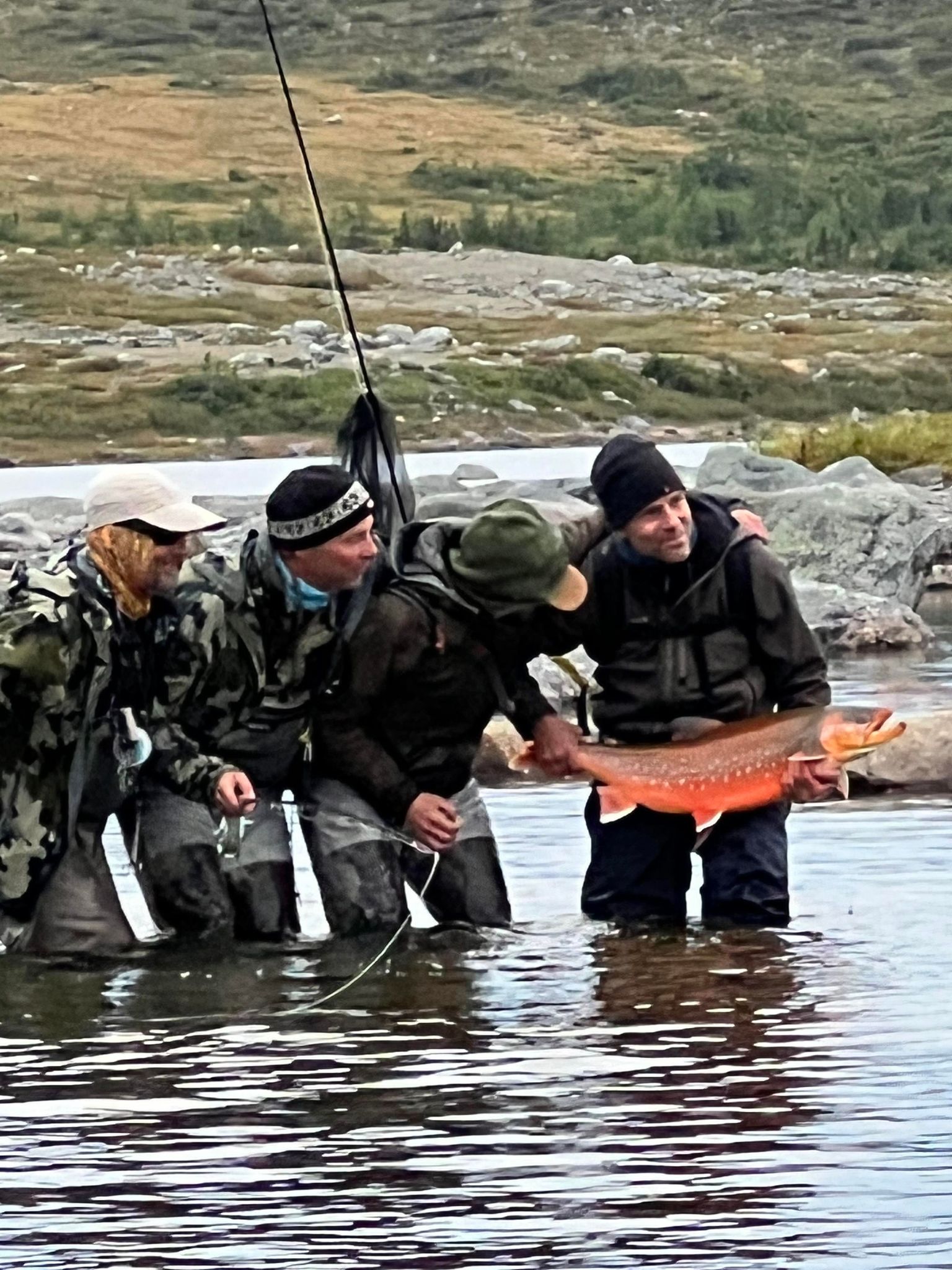
FOOD AND BEVERAGES:
Breakfast, lunch and supper are all included. Beginning with a hot and healthy breakfast that will carry you right through to a tasty pan fried shore lunch served back at the camp. At the end the day sit down to a rewarding full course meal.
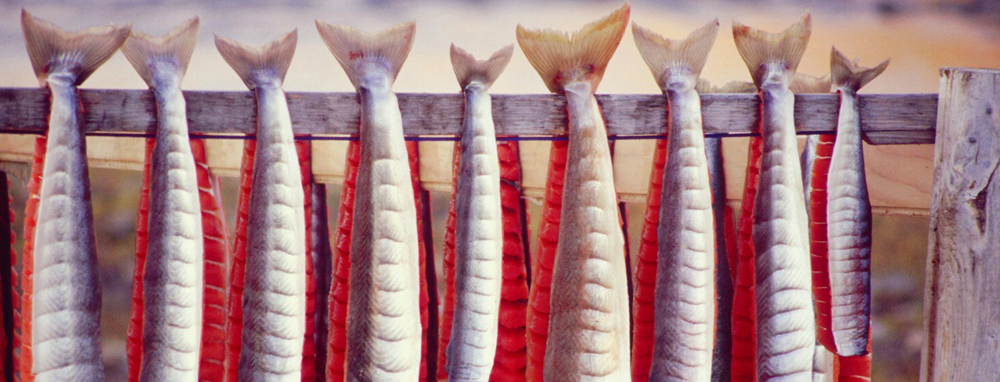
TRIP ITINERARY:
Day 1 - Depart Montreal 10:10am, arrive at Leaf River Estuary Lodge mid-afternoon approximately 2:30pm, settle in and begin fishing.
Day 2 -6 - spent fishing, Day 7 - Depart camp mid-morning, arrive back in Montreal late afternoon.

Breakaway Classic Adventures
9673 Route 19, Houghton, NY 14744
(716) 698-0845
info@riverdogflyfishing.com
All fly fishing tackle including rods, reels and flies are provided. Fly fishers who prefer to use their own gear should bring along a couple of fly rods from 8-10 weights, single handed versions and 7 -9 wt spey rods
A quality reel with a smooth drag system is a must as is several hundred yards of 30 lb backing.
Intermediate to fast sinking shooting heads are the norm but floating lines can be used with long leaders.
Mono Leaders and tippets range from 3' to 12' with a breaking strength of 8 lbs to 16 lbs.
Chest waders with removal cleats are recommend. A rain coat, multiple layers for cold and windy days add to the anglers comfort and make for enjoyable long days on the water and protection against the elements.
Biting insects in July and August can be annoying and bothersome. We highly recommend treating all of your garments including hats with Permethrin rather than directly applying insect repellent to your exposed skin; avoid using Deet at all costs as that melts your fly line.
An inflatable fly vest or suspenders are a good substitute to a bulky life jacket and should be worn at all times on the water. Wading belts and staffs are exssential! Personal gear is up to you but you'll need a sleeping bag good to minus 15 degrees Celsius.
All flies and tippet material are provided by your guide but visit our fly shop.
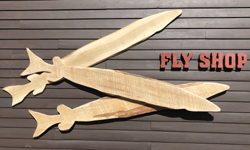
Guided Leaf River Estuary Trip - $7,500.00 USD per person.
July 6 - July 12, 2024 - Full
July 13 - July 19, 2024 - Full
July 20 - July 26, 2024 - Full
July 27 - August 2, 2024 - Full
August 3 to August 9, 2024 - 4 Rods
The following applies to all trips booked and organized by Breakaway Classic Adventures:
50% deposit per rod of the total package cost for each trip is due at time of booking to secure the trip reservation.
Full payment is due 60 days prior to departure and start of trip.
Trip packages are non-refundable, it is highly recommended that you purchase trip insurance in the event that you have to cancel, for any reason.

